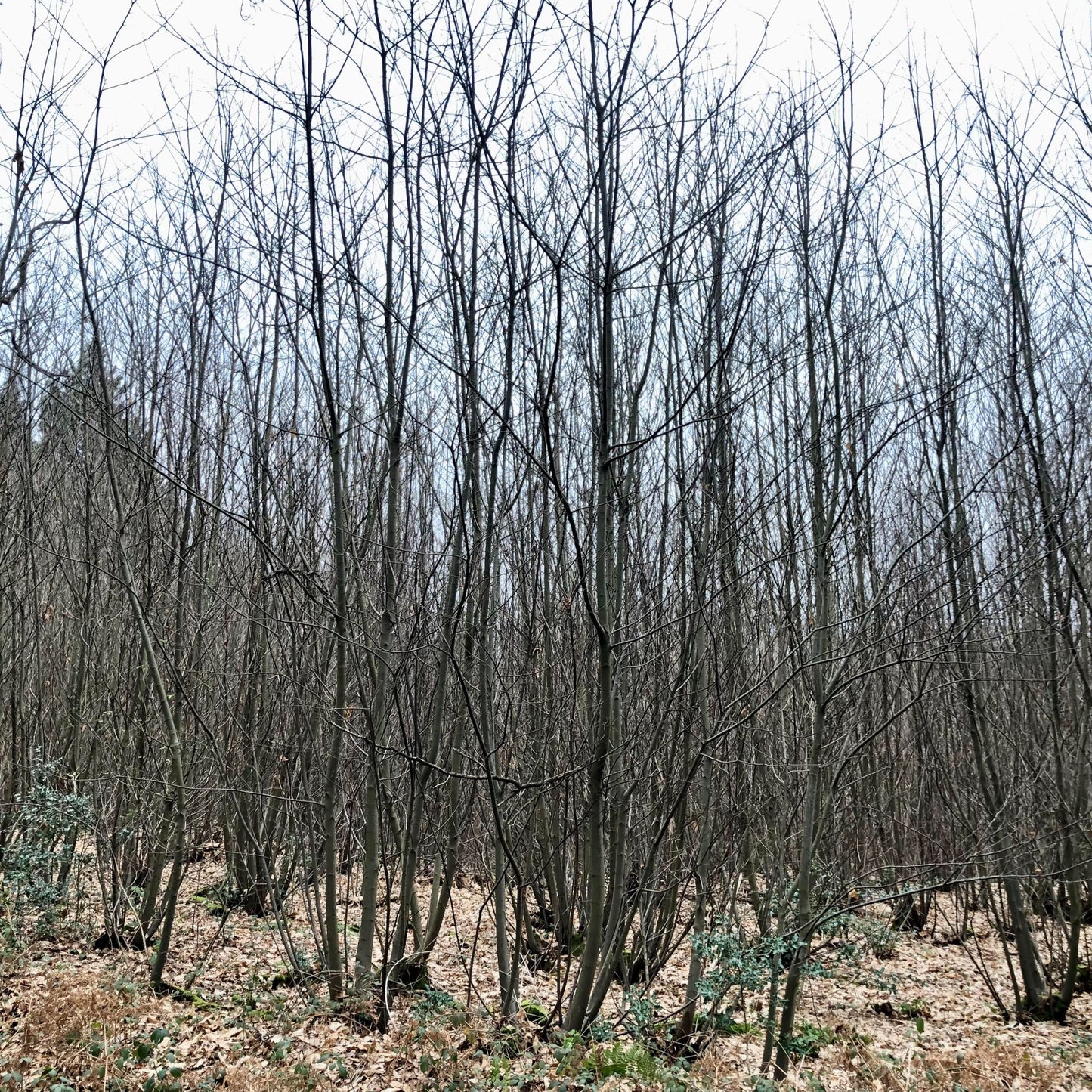Habitat Aid Ltd
Sweet Chestnut (Castanea sativa)
Sweet Chestnut (Castanea sativa)
Prices include VAT (when applicable) and delivery to mainland UK.
Couldn't load pickup availability
Sweet Chestnut (Castanea sativa)
Uses
Castanea sativa is still an important plant in some parts of Italy; we stumbled across a Sweet chestnut festival in a village outside Perugia a few years back, where locals were roasting the nuts and selling Castanea sativa's rich dark honey. There are cultivars available now which will give you bigger and more nuts than the native tree, and much quicker. They also seem to be more tolerant of a range of soil conditions.
Unfortunately the UK's more temperate climate means we can't currently make the honey here, but the Romans certainly ate the nuts and ground them to make flour - legionaries ate Sweet chestnut porridge before battle. The nuts have lots of starch - and hence make good (gluten free!) flour. The trees were sometimes known as "bread trees", but they have other uses too.
Particularly in the southeast on acid soils, where it's most common and self seeds very happily, you'll find managed coppiced Sweet chestnut plantations (see photo). It's a beautiful wood with a straight grain when young, and easy to work. It's most usually coppiced to produce poles or stakes, which we're familiar with as like alder they're resistant to rotting. They're widely used as stakes for erosion mitigation work for riverbanks.
Value For Wildlife
Sweet chestnut leaves are eaten by a range of invertebrates, particularly micro moths, but also including the rose chafer. The plants produce good nectar flow in higher temperatures.
Plants For Sale
Like all the native trees we sell, our Sweet Chestnuts are grown in the UK from UK origin seed. They are 100-125cm tall.
We also sell grafted French Sweet chestnut cultivars.
Suppliers: RV Roger, British Hardwood Trees.
See our planting and size guide for details and tips on planting. These hazel trees are all bare root, and are consequently available for delivery from November until March (please ask if you are interested in pot grown plants). During the lifting season there may be up to a month's delay between placing the order and dispatching, due to weather conditions or pressure of orders, which are dealt with in date sequence. Orders placed between March and September are confirmed in October ready for dispatch from November.
Information
Share







